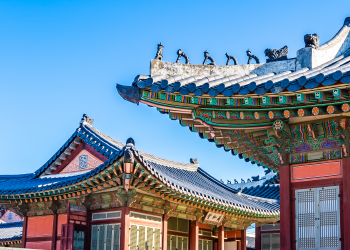Intellectual Property advancements in South Korea and Paraguay

South Korea
South Korea's intellectual property landscape has evolved in recent months, with the Korean Intellectual Property Office (KIPO) introducing amendments to both the Design Protection Act and the Trademark Act.
Designs
The changes to the industrial design legislation of South Korea entered into effect on February 12, 2025, aiming to increase the accuracy of design applications by ensuring the rightful creators are identified, whilst also streamlining the management of national Research and Development achievements.
In order to pursue its aims, changes have been introduced to the process for implementing corrections to the listed creators (inventors) on a design application. As such, the time frame in which corrections are permitted to be made to the listed inventors on an application has been restricted in order to prevent abuse of the system. Such constraints include the prohibition of adding non-creators to applications as inventors once the examination process has been completed.
Further, new creators cannot be added to a design application during the time period between the decision of registration of the design and the final registration once fees have been paid. It is, however, possible to still make minor amendments to the listed creators so long as their identity remains unchanged, for example, modifying small typographical errors or updating their address.
In addition, the document requirements in relation to such corrections have also been amended. Previously, supporting documents for corrections to creators named on a design application were required to be submitted only after the final registration. In line with the amended design legislation, such supporting documents must now be submitted during the examination process, a move which is intended to reinforce the integrity of the details and information provided in relation to the listed creators of the design.
Further, any corrections to the creator named on a design application must now be accompanied by a written explanation of the reason for the correction along with a confirmation document signed or stamped by both the design applicant and the affected creator(s).
The alterations to the design law amendments have been implemented with the intention of accurately establishing clear ownership of a design from the offset, aiming to prevent any potential ownership disputes.
Trademarks
The amendments to the trademark law of South Korea were enacted as of July 22, 2025, implementing changes to the opposition period, as well as the limit on punitive damages for intentional trademark infringement. The changes apply exclusively to trademarks that are published following the date of enactment of the altered law.
Prior to the introduction of the new legislation, trademark oppositions were permissible within 2 months of the date of the publication of the mark, whereas now, all oppositions must be filed within a period of 30 days. In turn, the shortened opposition period is intended to expedite the overall trademark registration timeline.
Although the new 30-day opposition period has been introduced, parties may still file a brief notice of opposition within this timeframe, followed by a detailed supplementary brief within an additional 30-day period. Furthermore, this supplementary period may be extended by an additional 30 days for national applications, or by 60 days if the opposing party is a foreign-national.
Paraguay
The National Directorate of Intellectual Property of Paraguay (DINAPI) has implemented a groundbreaking new tool in the intellectual property sphere in recent months, with the introduction of the National Repository of Sound Trademark in the jurisdiction.
This repository allows users to search for and listen to any of the registered sound marks which are contained within the system, paving the way for a more accessible system of trademark searches for IP right applicants, holders, and other interested parties. This, in turn, provides a greater extent of security to prospective applicants seeking to protect their marks.
Sound trademarks fall under the umbrella of "non-traditional" marks, alongside other types such as scent, or multi-media marks. Sound marks in particular may be represented in the form of melodic combinations or sounds, meaning that elements such as a characteristic tone could even be trademarked. In jurisdictions that recognise and register sound marks, such unique sounds can be protected as part of the identity of a good or service.
The innovative Repository database signifies a great step in the advancement of the trademark system of Paraguay, offering greater legal security to applicants and rights holders.